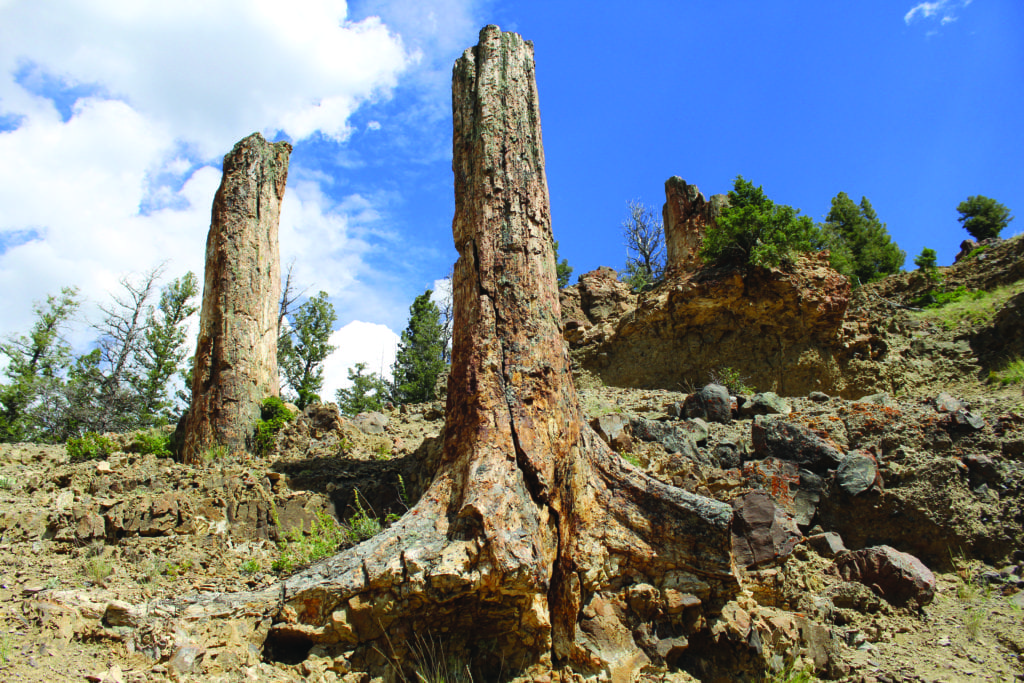May 3 – Yellowstone Petrified Forest


One of the most famous places to view petrified wood is at Specimen Ridge’s “Petrified Forest” in Yellowstone National Park. There, 63 rock layers contain vertical, petrified trees. It has been historically taught that a forest grew at each layer and were petrified in growth position–with each forest growing up and being buried by a volcanic eruption; then a new forest grew and was buried, and so on. For almost 100 years these layers were interpreted as having been laid down over hundreds of thousands of years. Yet, the facts point to a different explanation:
- Petrified tree rings from different layers were examined and found to match each other, indicating the petrified trees lived at the same time.
- Petrified trees did not have any root balls; they looked as if they were broken off abruptly.
- There were no true soils between any of the 63 layers, only debris that was undecayed. True soils would show gradations of decay.
- Mixed throughout the layers were tropical vegetation (brought in by the Flood waters.)
- Mineral content from the volcanic eruptions were the same. If each layer was buried under a different volcanic episode, the mineral content would be different. Yet throughout the layers, the mineral content was the same, indicating one super volcanic episode within a short period of time.
A better explanation would be a world-wide Flood. Trees were ripped by their roots and transported to this area. During the Flood they became waterlogged and sank vertically to the bottom of the water; eventally becoming covered with sediment. Yellowstone’s Petrified Forest testifies to the Flood during Noah’s time, not to huge peroods of time upon the earth.
Genesis 7:11-12
Reference
Austin, Steve and John Morris. Footprints in the Ash, Master Books: Green Forest, AR, p. 102-103.
Hergenrather, John & Tom Vail & Mike Oard & Dennnis Bokovoy. 2012. The True North Series: Your Guide to Yellowstone and Grand Teton National Parks. Master Books: Green Forest, AR. p.160-161.
